I always thought deck builders were an odd choice for a standalone game type. I'm a seasoned veteran of card-based minigames, from Triple Triad in Final Fantasy 8 through to
Long story short, I spent a day off work playing it for nine hours straight.
So that was my gateway to the world of card slinging.
It's lucky I was such a fan of Slay the Spire really, because Castle Morihisa, shall we say, takes inspiration from it, lifting pretty much the whole thing and dropping it into feudal Japan. There is some attempt at a story, told in a few sentences, but the lore is very thin on the ground. What you do have here though is a very competent example of the genre (pretty easy when you've essentially recreated a good game, mind you).
The game moves through a series of battles as you travel a map towards your objective. You start the game by picking your character from a choice of two, Monk or Onmyoji. Your choice of character determines your special abilities. The Monk can meditate to boost his defence, and use Mantra to debuff enemies, while the Onmyoji can summon spirits to help him or hinder enemies. Completing the game unlocks the samurai, and completing it with the samurai unlocks the ninja. Each class has its own pros and cons. You can also choose a superpower from one of three randomly chosen 'fallen heroes'. These abilities - some of which can be the difference between life and death - only have three uses, so you'll need to think hard about the right time to deploy one.
Each battle consists of you versus one or more enemies and takes place in turns. You start off with three action points and use cards from your deck until they run out or you've done what you want to do. You can always see the enemies' next moves, so you can decide to hit them hard, build up your armour to defend against an attack, or a combination of both. The fact you know what's coming makes this a very tactical experience - do you try and absorb all the damage through armour, attempt to finish them off, or is there another option?
For example, one of the effects on certain cards is Disarm, which reduces enemy attack power. Or you could use Leech to steal health, which might offset some or all of the damage you'll take. There are a huge number of cards to discover and use, and after each battle, you get to choose one to add to your deck, so you can build up quite a formidable arsenal, which comes in handy later on.
Winning a battle also nets you gold and talent points. Talent points are used to unlock new abilities or buffs in the skill tree, such as the Onmyoji summoning a random spirit at the start of each battle, or the ability to regenerate health every time you kill an enemy. That one's particularly handy because you don't heal between battles, meaning one bad fight can pretty much spell the end of your run, even if you survive.
Coins are spent in the shop. You can buy new cards, pick up consumable items and even destroy cards from your deck. This sounds counterintuitive, but once you pick up some high-powered attacks later, you can see the sense in getting rid of a card that only does 3 damage.
Having the skill tree and the shop available at any time is where this game differs from Slay the Spire, and I really do prefer it. Many's the time I have been in deep trouble in StS, praying for the shop to turn up via RNG and being disappointed. Having it available at the press of a button feels like you have more agency. Conversely, that means if you balls it up it is more likely to be your own fault. And this happens a lot because this game is hard. Very hard. Go into a boss battle unprepared, on low health or with a bad deck and you'll be out the door in seconds. This does mean that taking out a tough boss gives you a real sense of achievement, though, and I haven't often come away from a beating feeling like the game totally stitched me up, although sometimes it clearly does.
Travelling between battles isn't just a pretty map, either. You come across different options for the next stage. You can find artefacts that can help your run, experience random events that might net you some money or a new card (or penalise you in some annoying way), or find a campsite, which gives you some health back or the opportunity to upgrade a card. You can also occasionally choose to face an elite enemy and good luck with that. That said, if you do manage to take one out then the rewards are much greater, including quest scrolls that, once completed, can give you big money or buffs. And you'll need that going into the boss fights.
The graphics and sound are good - music and FX are suited to the theme, and the enemy graphics deserve a mention for being unpleasant, full of mutated people, monsters and yokai (Japanese mythical ghosts), such as the Kasa-obake, a possessed umbrella (seriously), or the Kuchisake-onna, a scarred woman who kills with a pair of scissors. The graphical theme is nice too, with a Japanese screen opening at the start of the battle, and the map being rendered in the classical scroll style.


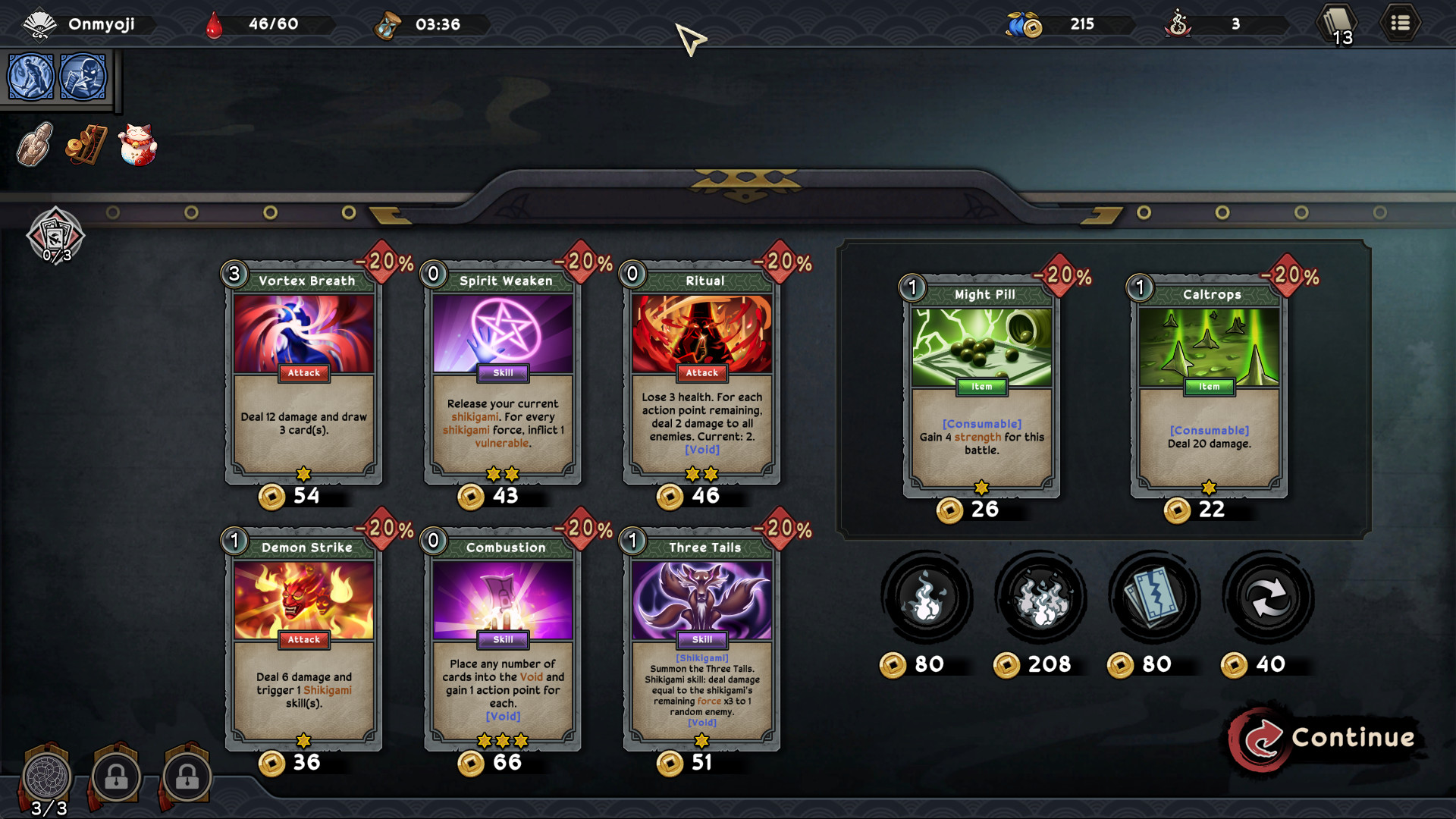
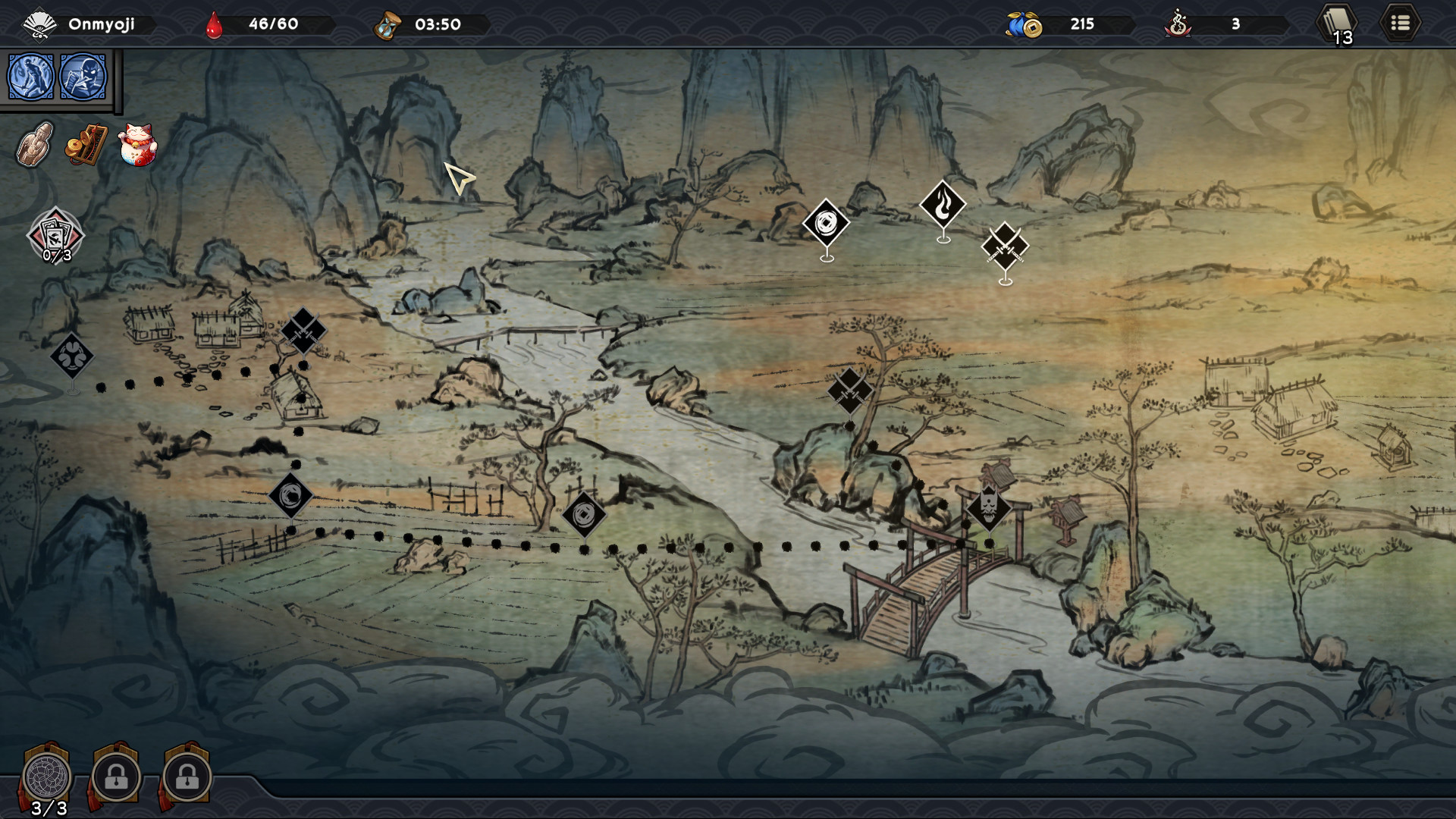
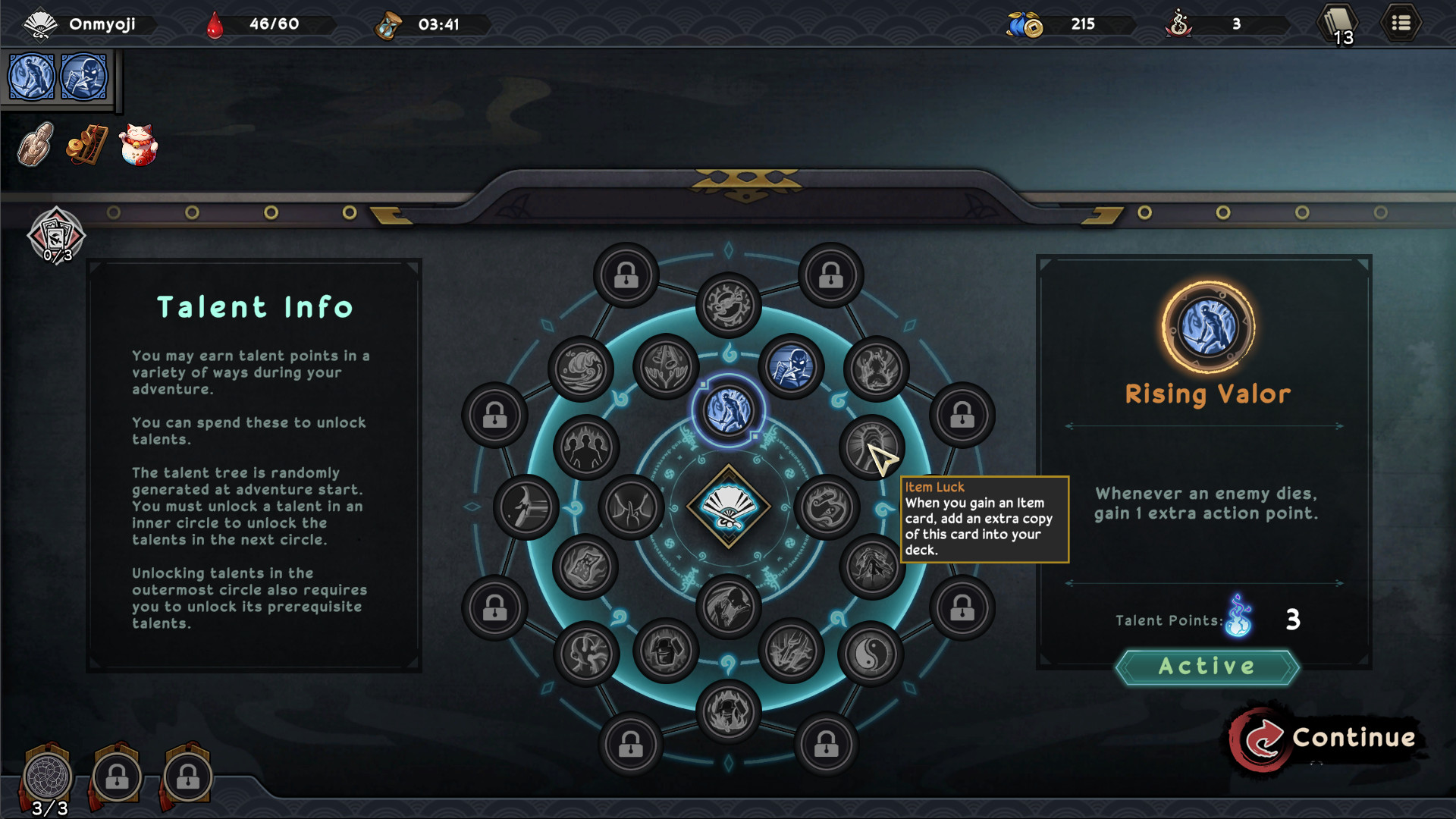
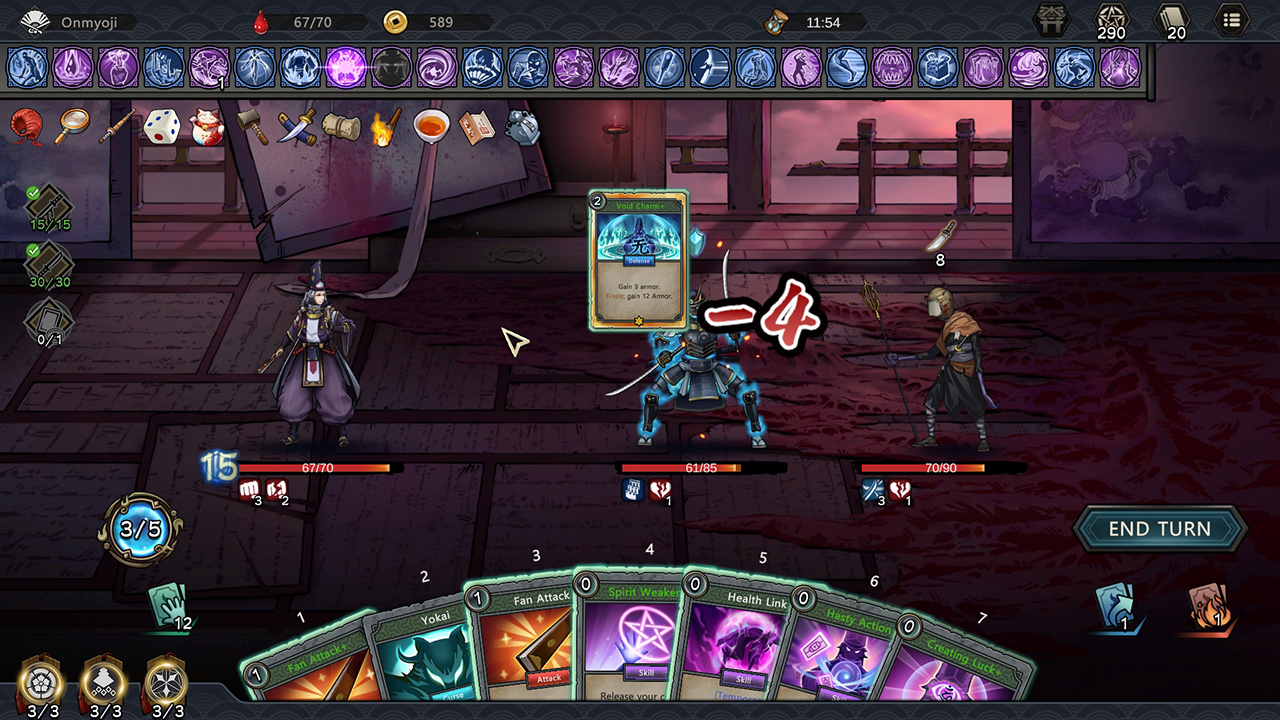
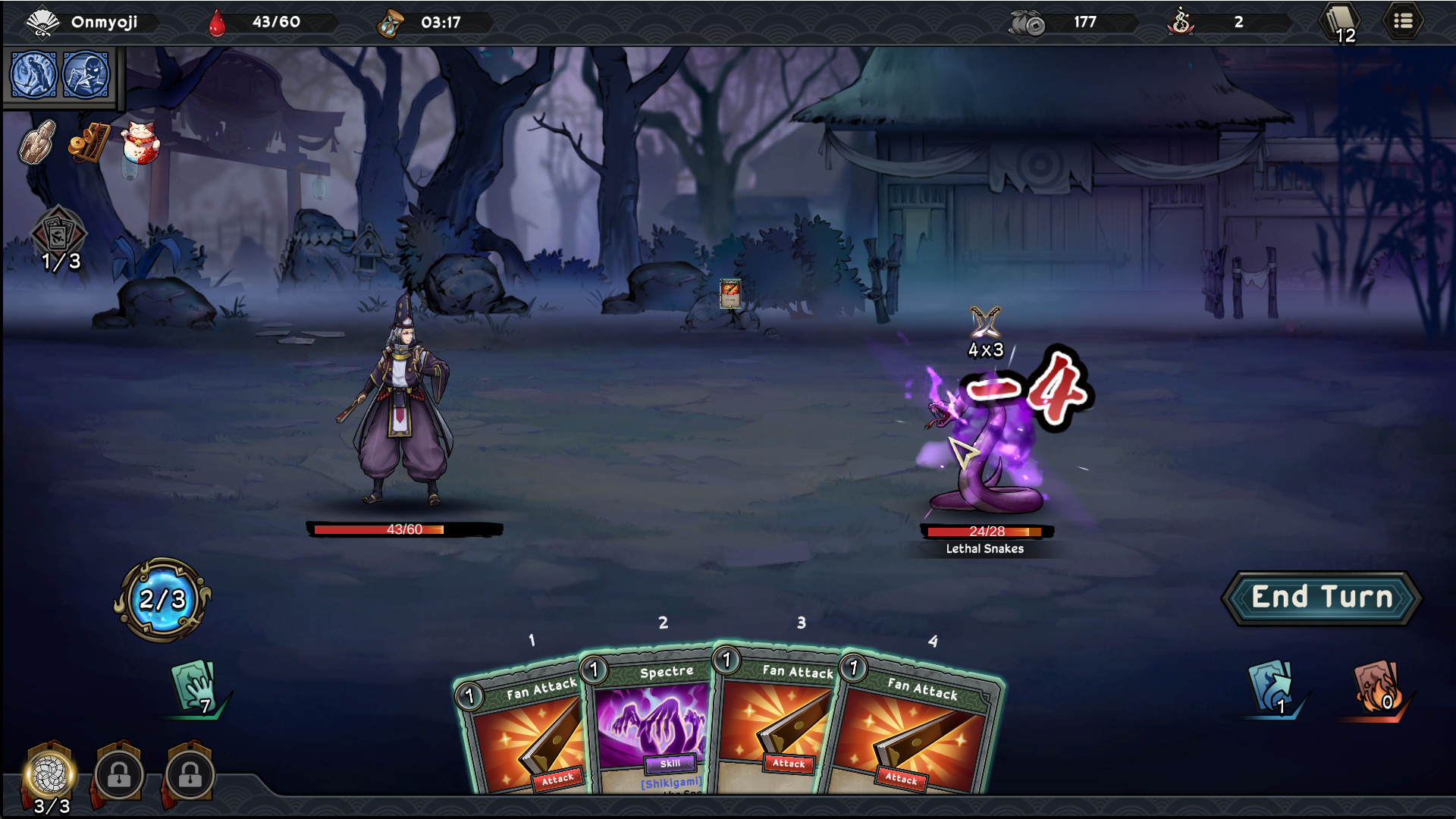

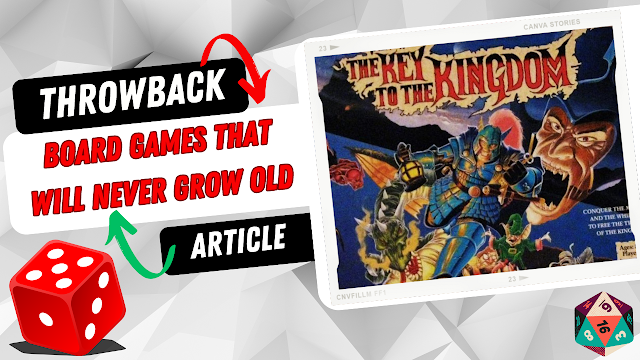
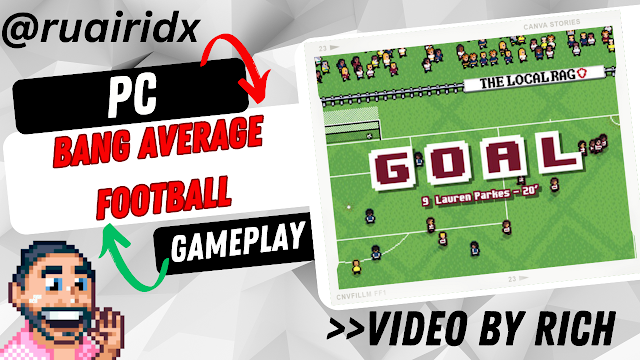


No comments:
Post a Comment
Like what you see in the Games Freezer?
Why not tell us what you think with a few well-chosen comments? :)
Note: only a member of this blog may post a comment.